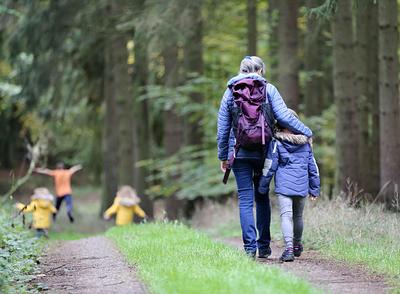Looking for all Articles by Melissa Harrison?
Cultivating wonder in the natural world
Children's author Melissa Harrison discusses the importance of nature wherever you live, and ways to stay connected.

If there's one thing lockdown's taught us it's the importance of 'nearby nature': the green and growing things we can see from our windows, or experience within a short walk from home. As someone who writes about the natural world in books and newspapers, it's been a joy to see people discovering or cementing a love of the outdoors by planting up a window box, feeding birds and learning their songs, growing vegetables, or discovering their local park or wild space, as though a new nature-loving constituency has been born, and will hopefully now stand ready to defend the discoveries they've made.
With over 80% of people in the UK now living in urban areas, it's vital that we don't treat nature as something distant we have to get in the car to go and see, but instead protect and cherish it wherever it's found – especially those living things that have kept us company over the last gruelling year.
As lockdown lifts, the weather warms and we're able to venture a little further and spend time with family and friends, I hope our newfound need for nature doesn't wane. There are all sorts of ways we can keep connected:
Create a nature table
Collect things you find in your natural environment (whether you live in the rural countryside or a bustling city) and create a nature table at the end of each month, using objects that reflect the seasons.
Get artistic
Art and craft projects are a great way to stay connected to nature. Why not try drawing, painting or photographing the same spot at regular intervals to track how it changes.
Make a map of your 'home patch'
One of my favourite things to do is to make a map of my 'home patch' showing where all the wild things live: the squirrel dreys, blackbird nests and rabbit burrows, the animal tracks in long grass, snail shell-strewn thrushes’ anvils, caches of nuts, bird of prey plucking posts, mining bee holes and drinking spots.
These kinds of activities create an awareness of the natural world as somewhere that's busy with a huge cast of non-human characters, all of whom are just as important as we are. It’s the same magical, secret world I’ve tried to conjure up in By Ash, Oak and Thorn, and one that we can all have access to if we're willing to go carefully, gently and curiously into the outdoors, and look and listen hard.

My first kids' book, By Ash, Oak and Thorn, is packed full of details and observations about animals, plants and wild places, and I've also made sure that it gives a real sense of the changing seasons, too: I believe that knowing what happens when is a crucial part of how we orientate ourselves in space and time, as well as a vital corrective to the 'nature blindness' that can result from the smoothing out of seasonal changes via central heating, street lighting, air conditioning and shops that sell everything under the sun, all year round. Feeling the age-old rhythm of the turning earth reminds us that we are animals, and dependant on our environment: a vital message right now.
I write about nature to try and help people connect to it – because of the many benefits it brings us, but also because nature needs us to love it so that we will protect it. That's especially important when it comes to children, who are working out what kind of person they'll be and how they'll relate to the world around them.
By Ash, Oak and Thorn is published by Chicken House and is available now.